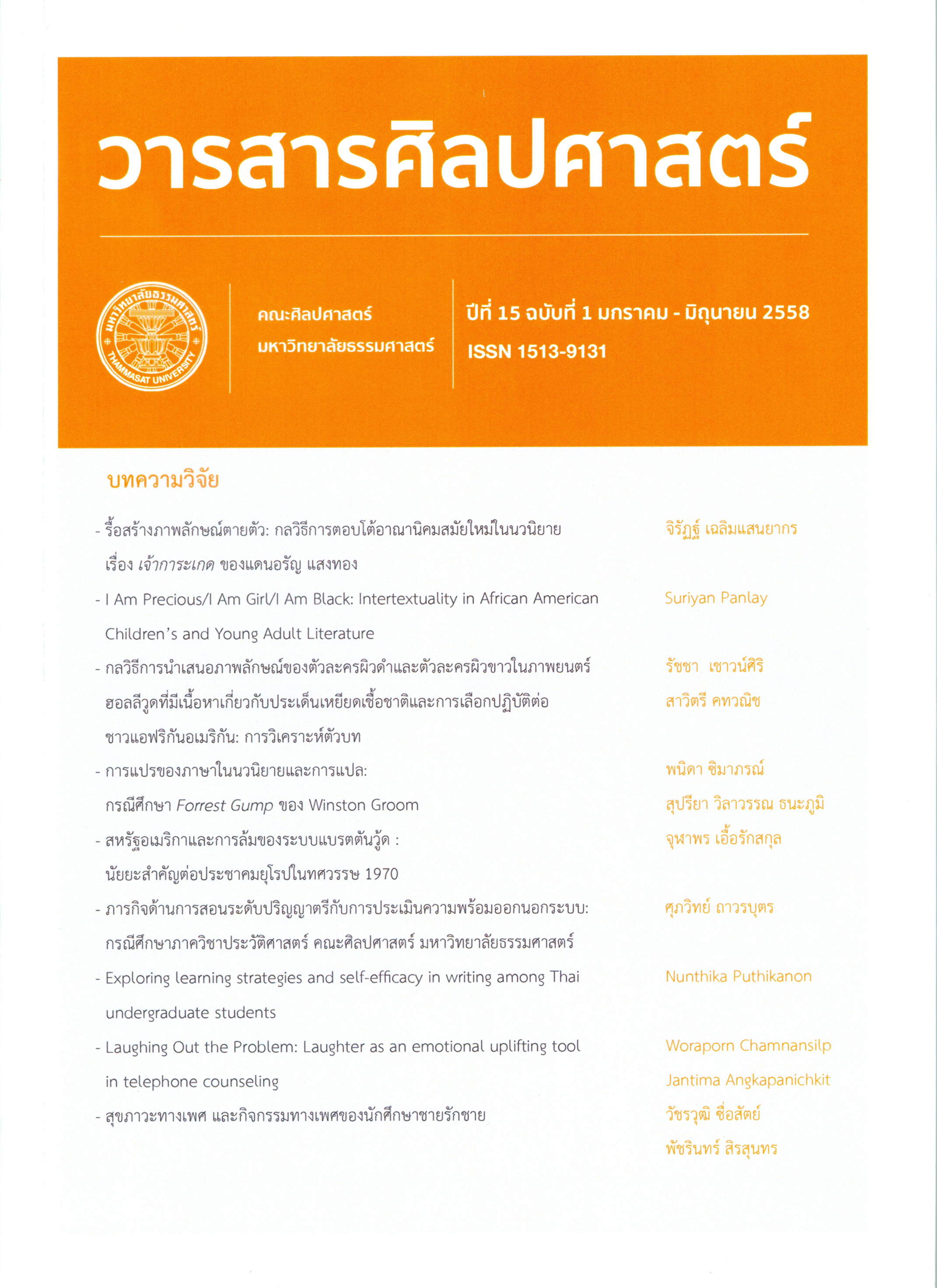การแปรของภาษาในนวนิยายและการแปล: กรณีศึกษา Forrest Gump ของ Winston Groom
Main Article Content
บทคัดย่อ
เมื่อนักแปลงานวรรณกรรมประสบปัญหาในเรื่องการแปรของภาษาที่ปรากฏในงานวรรณกรรม นักแปลจะ
เลือกใช้วิธีแปลอย่างไรที่ทำให้สามารถคงความหมายของต้นฉบับที่ผู้เขียนต้องการถ่ายทอดหรือสื่อความหมายไปยังผู้อ่านได้อย่างมีประสิทธิผล บทความวิจัยนี้มีจุดประสงค์ที่จะศึกษาลักษณะของการแปรของภาษาในนวนิยายไทยสี่เรื่อง และในนวนิยายแปลเรื่องโลกใบใหม่ของฟอร์เรสท์ กั๊มพ์ ของสมพล สังขะเวส โดยวิธีการวิเคราะห์เปรียบต่างและ Relevance theory ซึ่งแสดงให้เห็นว่านักเขียนไทยและสมพล สังขะเวส ผู้แปลนวนิยายเรื่อง Forrest Gump ต่างก็มีวิธีนำเสนอการแปรของภาษาในสามระดับคือ ระดับเสียง คำ และประโยค เหมือนกัน
What can a translator do when translating literary texts which contain varieties of language? What should he/she do to preserve the particular features of variation in language use? The research article explores these questions by adopting the models of Contrastive Analysis (Hoey and Houghton, 2001) and
Relevance Theory (Weber, 2005) and analyzing the use of varieties in four Thai novels and in the Thai translation of Winston Groom's Forrest Gump, Lok Bai Mai Khong Forrest Gump by Somphol Sangkhawes. The result of the research shows that writers of the four Thai novels and Somphol Sangkhawes employ the same strategies to maintain sound, word, and sentence, the three grammatical aspects of language variation.


